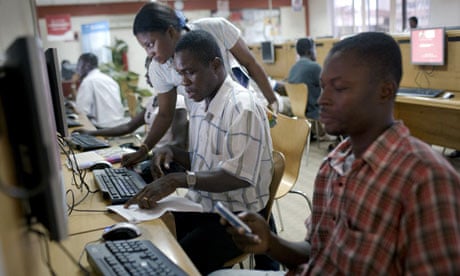Two EU commissioners participated in the fourth global review of aid for trade in Geneva on 8 July. The event was aimed at providing an opportunity for donors and developing countries to look at how aid for trade is helping people trade and what has been achieved.
Andris Piebalgs, responsible for development aid, and Karel de Gucht, who holds the trade portfolio, took part in the event, organised by the World Trade Organisation (WTO).
Piebalgs told EurActiv that the meeting was "a key opportunity" for donors and developing countries to come together to look at how aid for trade is helping people (see background, below).
"The EU, collectively with its member states, is the world's largest provider of aid for trade," the commissioner said. He added that this year's joint report, Aid for Trade at a Glance: Connecting to Value Chains (from the WTO and the Organisation for Economic Co-operation and Development, or OECD) provided evidence that aid for trade increased trade performance.
"Every euro invested in aid for trade produces between eight and 20 euros in additional exports from developing countries," Piebalgs said.
The EU is also a strong proponent of trade facilitation, within the wider aid for trade initiative. In 2011, the share of the EU and its member country contributions in the global trade facilitation accounted for 59% of the total effort. It is estimated that a total of $200bn (€155bn) has been mobilised since the inception of aid for trade in 2005.
A critical view
However, some NGOs question the effectiveness of the effort. Traidcraft, a UK-based NGO fighting poverty through trade, and Cafod, the official overseas development and relief agency of the Catholic church in England and Wales, commissioned a study that looks critically at aid for trade's achievements and formulates recommendations.
The study (pdf) says there is very little information available as to whether aid for trade projects and programmes alleviate poverty. It says poverty reduction is only measured at macro-level and in the long-term perspective. In contrast, the impact of concrete projects on poor and excluded groups is typically not assessed, the report says.
The study recommends more rigorous impact assessments, greater accountability by donors, greater transparency of monitoring information, and more independent quality research.
According to the report, the share of aid for trade of overall official development assistance (ODA) globally has risen from 26% in 2006-07 to 35% in 2010. Compared with other regions, aid for trade to sub-Saharan Africa has increased the most – by almost 40%.
The geographic allocation of aid for trade by donors differs greatly, the report reveals. For example, the share of UK support for Asia in 2010 was 38%, compared with only 13% from the European commission.
The report is critical of the EU's decision-making process, saying too many players are involved: the directorate general of EuropeAid; the directorate general for development and co-operation, Devco; the directorate general for humanitarian aid and civil protection, Echo; and the European external action service, which manages the 150 EU delegations worldwide.
It notes that the EU process of evaluation of projects, which is highly centralised, leaves little room for reflection on local circumstances and for flexibility in project design.
Background
The aid for trade initiative, launched by the WTO in 2005, helps developing countries to trade. Many developing countries face a range of supply-side and trade-related infrastructure obstacles that constrain their ability to engage in international trade.
Aid for trade provides assistance to developing countries – especially least developed countries – to build their physical, human and institutional capacity to trade. This includes overcoming constraints such as lack of productive capacity, excessive red tape or poor infrastructure.
The impact of trade facilitation can be very visible and tangible; it can lower transport costs, shorten queues at borders, simplify controls and formalities, increase trade opportunities and create new market openings.
External links
EU institutions
Commission: aid for trade
Commission: what is aid for trade?
International organisations
OECD: aid for trade at a glance
OECD: connecting to value chains
Press articles
The Guardian: is aid for trade an effective tool for reducing poverty?
All Africa: Ethiopia: ECA and aid for trade
Other
Saana Consulting: aid for trade: reviewing EC and DfID monitoring and evaluation practices (pdf)
